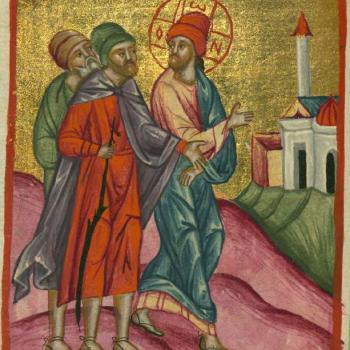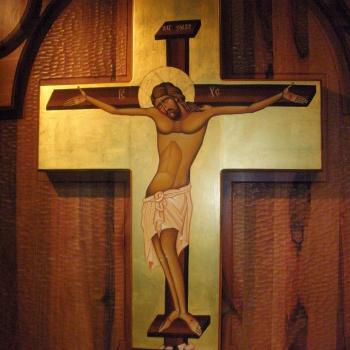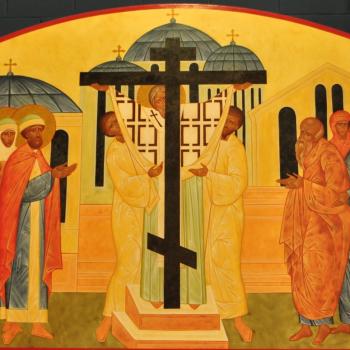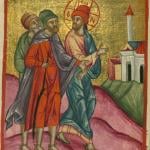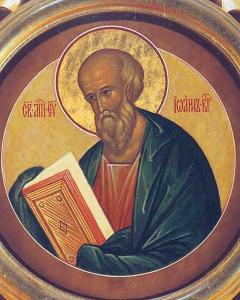
The Apostle John reveals to us in various texts under his name, texts coming either directly from him or indirectly through his community, the love he experienced from Jesus. He did so with a desire for us to experience that love for ourselves. What we find in those texts is the constant mention of God’s love for us, but also, the way which we are to embrace that love by acting in and with love in all that we do.[1] John is the one who gives us the most famous quote from Jesus which tells us about God’s love for the world, a love which indicates how God desires not to condemn the world but to save it. John tell us that we must embrace that love ourselves, and we cannot do that if we hate anyone. We are to love everyone (which is not to say we will approve them and the evil they do, but rather, we should look for and find the good which everyone has, the good given to them by nature, the good which gives everyone dignity which must be affirmed by our love). That is, those of us who have embraced God’s love must live in such a way we reflect it and share it with others:
For in him each one ought to be so ready to give what he has received, as to appear to have received it for no other reason but to give ; that in the giving there may be set forth the receiving, and the love of God in the love of our neighbour ; since we then declare that we love Him, if, as St. John teaches in his Epistle, we love our neighbour. ” If a man say, I love God, and hateth his brother, he is a liar.” [2]
John, the disciple whom Jesus loved, knew that the love he received was not an exclusive love; it was meant for him, but it was also meant for everyone. This is why he did what he could to share that love with others. He had a personal experience of the way Christ’s love freed him from his worst instincts, such as the way, in his youth, he was known as a “Son of Thunder” due to the rash way he would act (often, out of anger). He came to see how such anger turns into hate, and how such hate leads not only to acts of aggression towards others, but against oneself as hate ends up becoming self-destructive, leading the one who embraces it to eventually seed their own eternal annihilation. Due to the way he learned to embrace the love he had been given, to accept it and the good which Jesus saw in him, and to live it out by loving others, he did did not go the way of Judas when he was tried and tempted. For both John and Judas felt Jesus’ love for them, a love which drew them both to Jesus so as to find themselves next to Jesus at the the Last Supper, as Sergius Bulgakov noted:
But in relationship to Judas, even John, and precisely he, makes up a kind of paid, if not in personal friendship with Christ, then at least in special chosen-ness, each in his own way. This chosen-ness is imprinted even on the Last Supper, and there, pre-eminently, in the proclamation of the beloved discipled himself – in the Gospel of John, although even that, like everything about Judas, is conferred half in word, half in silence, and generally in half—tones. From the description of the Last Supper in the 4th Gospel, it emerges it was Judas and John who reclined, surrounding Christ most closely, the first, namely Judas (on the left) and in that sense he was Christ’s first guest), and the second on the right.[3]
Judas did not embrace the way of love. He wanted Christ to be a militant messiah taking charge of the world. He was angry, and it was his anger which got the best of him. It made him think he had to force Jesus’ hand to become the militant messiah he expected, and when Judas saw that he failed, it led him to hate himself for the way he betrayed Jesus and seek his own death. John, on the other hand, embraced love, made love the foundation for the way he lived out his life. In the end, John lived the longest of all Jesus’ apostles, doing so with patience, bearing burden after burden, including when he found himself sent into exile at an old age, because the love he felt and the love he gave helped him endure the burdens imposed upon him without giving in to the temptation of anger, the temptation which he once had in his youth.
Through Judas and John we are shown to have had two different outcomes people can have after encountering Jesus. Judas represents those who do not embrace the way of love, while John represents those who do. John knew himself when he accepted that love. It led him to know that it is only through love we will know the truth:
By this we know love, that he laid down his life for us; and we ought to lay down our lives for the brethren. But if any one has the world’s goods and sees his brother in need, yet closes his heart against him, how does God’s love abide in him? Little children, let us not love in word or speech but in deed and in truth. By this we shall know that we are of the truth, and reassure our hearts before him (1 Jn. 3:16-19 RSV).
John went from being a Son of Thunder to being the disciple whom Jesus loved; he wants us to join him in the spirit of love and realize that we are all meant to be like him, to see ourselves as the one whom Jesus loved. John, so caught up in that love, was able to follow Christ to the cross, and it was in and with that love, he was able to take on Christ’s request and look after and take care of Mary as his own mother. John saw and experienced the kingdom of God because of he truly embraced the way of love as his calling in life. It was that experience which allowed him to become “The Theologian,” a title which represent someone who is so touched by the kingdom of God, that they can reveal it to others, not in an academic sense, but from experience, speaking about transcendent truths with an authority few have ever had. Most engage theology on a lesser level, a level which has some value, but which must always be understood as limited, and when that limit is not understood, then it can become a distraction from the greater truth – this, of course, is what St. Thomas Aquinas came to realize at the end of his life, and something which, from time to time, we need to be reminded lest we become caught up in trivialities and close ourselves from the greater truth, the truth which is revealed to us in Christ and the love which he shares to the world.
[1] While there is all kinds of debate concerning the identity of the author of the Gospel of John, the author of the book of Revelation, and the author of the epistles given to us under the name of John, I believe they all have the beloved apostle behind them, though it is possible they are mediated by secondary authors or editors.
[2] John Colet, “Celestial Hierarchy” in Two Treatises on the Hierarchies of Dionysius. Trans. Joseph Hirst Lupton (London: Chiswick Press, 1869), 51.
[3] Sergius Bulgakov, Two Chosen Ones: John and Judas. Trans. Mike Whitton (Independently Published, 2023), 9.




